Ulaanbaatar capital day tour
SHORT DESCRIPTION
Ulaanbaatar, formerly known as "Red Hero," stands as the vibrant capital and largest city of Mongolia. Unlike being part of any aimag (province), Ulaanbaatar holds a significant population, with over 1.3 million residents as of 2014, constituting nearly half of the country's total population. Nestled in north-central Mongolia, this bustling metropolis is situated at an elevation of approximately 1,300 meters (4,300 ft) within a valley along the Tuul River. As the cultural, industrial, and financial heart of Mongolia, Ulaanbaatar plays a pivotal role in the nation's development. It serves as the nucleus of Mongolia's extensive road network and maintains crucial rail connections, linking it to both the Trans-Siberian Railway in Russia and the Chinese railway system. With a rich blend of history, culture, and economic significance, Ulaanbaatar stands as a dynamic hub that propels Mongolia forward into the global landscape.
- Category: Short and Day tours
- Available: Year around
- Duration: 1 days
- Destination: Ulaanbaatar city
ESSENTIALS
GUIDE
A Chinese, English, or Russian-speaking Mongolian guide will accompany the group throughout the trip. The guide, a native Mongolian with extensive local knowledge, will cater to any requests, ensuring your holiday becomes an unforgettable experience.
TRANSPORT
For this trip, you have two options. The first is a high-level, latest model, air-conditioned private 4WD vehicle for maximum comfort during your touring days. The second option is a Russian 4x4 Van, operated by a driver with 20 years of experience.
MEALS
In Mongolia, dining will take place at fine American, European, and Asian cuisine restaurants. The Mongolian diet primarily consists of mutton, beef, rice, and noodles, forming the basis of your meals. Trail rations may include vegetables, eggs, peanut butter, cheese, and occasionally yak! Some days will feature lunchboxes prepared by our cook.
TOUR PACKAGE PRICE
| Group size | 1 pax | 2-3 pax | 4-6 pax | 7-9 pax | 10-12 pax | 13-15 pax | More than 16 pax |
| Price/Per person | 330$ | 280$ | 270$ | 260$ | 250$ | 240$ | 230$ |
| No | Include service | Exclude service | Include service of Meals |
| 1 | Vehicle with a driver. | Items of personal nature | Breakfast, Lunch, Dinner |
| 2 | English speaking guide | Beverages, alcoholic drinks, bar bills, laundry | Per day 3 bottle water for per person /1,5 liter/ |
| 3 | Accommodation/Ger camps and Hotel/ | Travel and insurance | One time Mongolian traditional food /lamb with vegetables/ |
| 4 | Breakfast, Lunch, Dinner | International transportation | |
| 5 | Airport shuttle | Taxi | |
| 6 | Optional activities | ||
| 7 | Single supplement /For hotel or Ger camp/ | ||
| 8 | Gratuity for the tour team |
TOUR ITINERARY
Gandan monastery
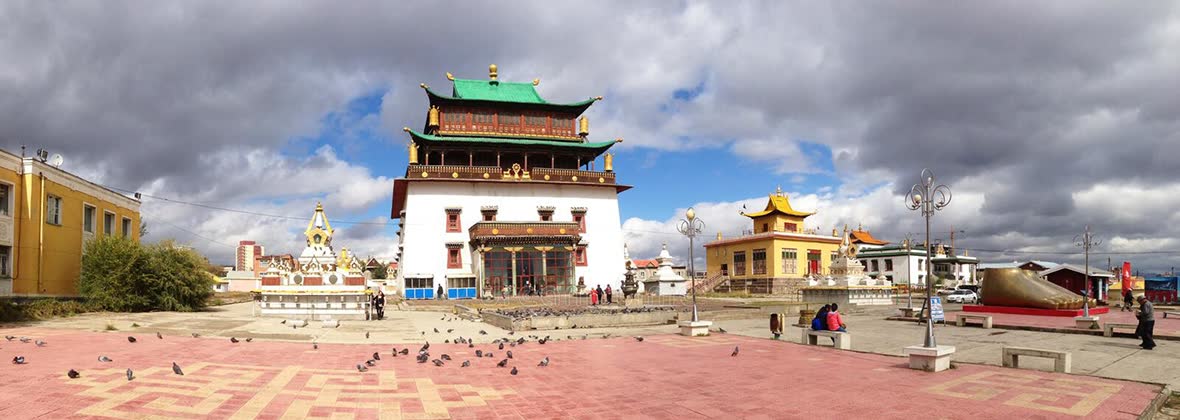
Gandan Monastery stands as the epicenter of Mongolian Buddhism, drawing visitors with its spiritual significance. At the heart of this revered site lies the Migjid Janraisig Temple, a prominent attraction within Gandan Monastery. Here, a magnificent and newly gilded statue of Migjid Janraisig commands attention, standing at an impressive height of 25 meters and weighing 20 tons. Adorned with jewels, this statue serves as a testament to the resurgence of Buddhism in Mongolia, symbolizing hope and revival. It is a reconstruction of a previous statue, which fell victim to destruction during the tumultuous period of the 1930s under communist rule. The reconstruction, completed in the mid-1990s, stands as a collaborative effort fueled by the donations of the Mongolian people. Explore the temple and immerse yourself in the rich spiritual heritage it represents.
National History Museum

The museum offers a captivating journey through the history and culture of the Mongolian people, spanning from the ancient Stone Age to the contemporary era. On the first floor, intriguing exhibits showcase petroglyphs, deer stones (sculptures depicting reindeer and other animals), and burial sites from the Xiongnu and Uyghur periods. Venturing to the second floor reveals a remarkable collection of costumes, hats, and jewelry representing the diverse ethnic groups found across Mongolia. The third floor beckons enthusiasts of Mongol history, featuring genuine examples of 12th-century Mongol armor. Of particular note is the correspondence between Pope Innocent IV and Guyuk Khaan, dated November 13, 1246. This historical document, inscribed in both Latin and Persian and sealed by the khaan, is a testament to diplomatic exchanges of the time. Moreover, visitors can delve into traditional Mongolian culture on the third floor, where a furnished Ger (traditional dwelling) is on display alongside items related to farming, domestic life, saddles, and musical instruments. This comprehensive museum experience offers a profound exploration of Mongolia's rich heritage.
Sukhbaatar square
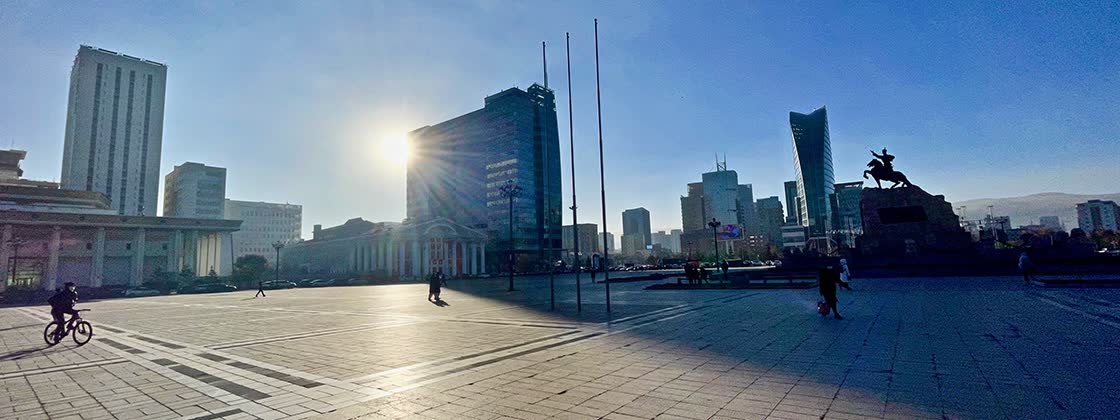
Chinggis Khaan Square, formerly known as Sukhbaatar Square, is adorned with a bronze statue commemorating Sukhbaatar, a revolutionary hero of Mongolia, seated proudly on his horse. Despite the official name change to Chinggis Khaan Square in 2013 by city authorities, many locals still colloquially refer to it by its former name, Sukhbaatar Square. This iconic square stands as a symbol of Mongolia's historical and revolutionary legacy.
Lunch

BD's Mongolian Barbeque in Ulaanbaatar offers one of the finest dining experiences in the city. This restaurant is a must-visit for those seeking a unique and flavorful Mongolian barbeque experience. Enjoy a variety of fresh ingredients, vibrant flavors, and the interactive process of creating your own customized stir-fry. BD's Mongolian Barbeque provides a delightful culinary adventure in the heart of Ulaanbaatar.
Narantuul black market
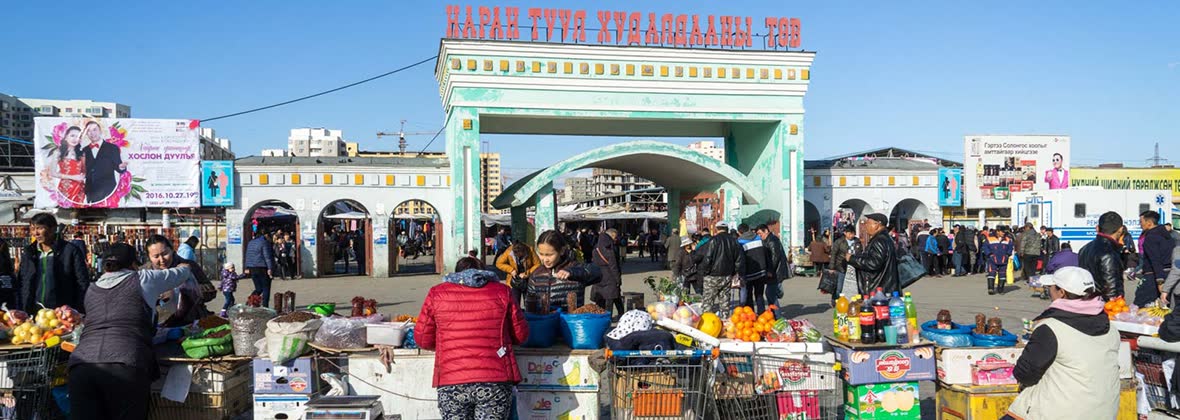
The unique marketplace is a must-see destination for those seeking traditional Mongolian clothing, intricate carpets, authentic horse-riding gear, and a wide array of souvenirs. This vibrant marketplace offers an immersive experience into Mongolian culture, providing visitors with the opportunity to discover another facet of Mongolia through its diverse range of products. Explore the stalls, interact with local vendors, and take home a piece of Mongolian tradition from this bustling and culturally rich marketplace.
Bogd Khaan Palace Museum
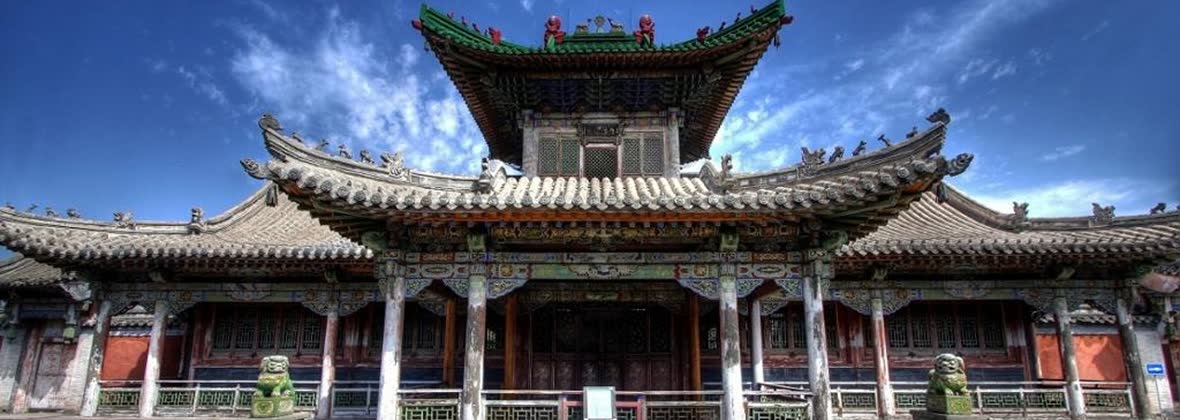
The Winter Palace of Bogd Khaan, established in 1924 as one of Mongolia's earliest museums, served as the winter residence for the last Bogd Khaan, Javzandamba. This historical site encompasses two main sections—the summer palace featuring seven temples and pagodas, and the winter palace, a two-story structure designed in a European architectural style. Explore the rich history and cultural significance of the Bogd Khaan Palace Museum, delving into the legacy of Mongolia's last spiritual leader and the unique blend of architectural influences present in this captivating landmark.
Zaisan Hill
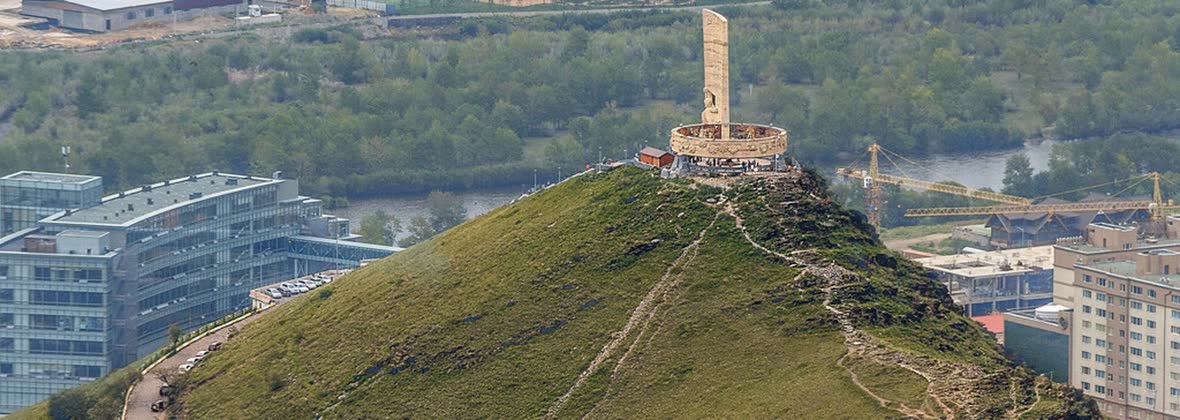
Situated in the southern foothills of Ulaanbaatar, the Zaisan Memorial stands as a tribute to Soviet soldiers who sacrificed their lives during World War Two. Constructed by the Russians, this memorial features a striking tiled mural encased within a massive concrete ring, elevated approximately 5 meters above the ground. Renowned for its panoramic vistas, Zaisan serves as a popular tourist destination, offering breathtaking views of the city and earning its place as one of Ulan Bator's notable landmarks. Explore the memorial's historical significance and appreciate the scenic beauty it provides to visitors.
RELATED TOURS
Embark on an unforgettable adventure through the mesmerizing landscapes of the Southern Gobi Desert with our carefully crafted tour. Trace the footsteps of the renowned American explorer Roy Chapman Andrews as you explore the legendary Flaming Cliffs at Bayanzag, a site steeped in history and natural wonders.
Embark on a mesmerizing journey through the heart of Mongolia, a land steeped in the legacy of Genghis Khan and graced by the resilience of nomadic traditions. Unfolding over six days, this immersive tour invites you to witness the enduring spirit of one of the last nomadic cultures on Earth.
Ulaanbaatar, formerly known as "Red Hero," stands as the vibrant capital and largest city of Mongolia. Unlike being part of any aimag (province), Ulaanbaatar holds a significant population, with over 1.3 million residents as of 2014, constituting nearly half of the country's total population. Nestled in north-central Mongolia,


